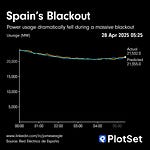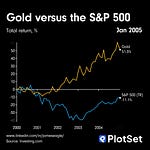That yellow ribbon you’re looking at is the US yield curve’s long end punching back to 5%.
On 24 May 2025 the 30-year Treasury closed at 5.04 %, the highest since the October-2023 bond rout, while the 20-year note has now spent three straight sessions north of 5% Wolf Street.
At the same time, average 30-year fixed mortgage rates have retaken the 7% handle: Freddie Mac’s weekly survey prints 6.86 % and Mortgage News Daily’s daily index reads 7.02 % Freddie Macmortgagenewsdaily.com.
In short, the bond vigilantes are back—and Main Street is feeling the squeeze.
Three take-aways
Term-premium tantrum – Investors are now demanding hazard pay: benchmark 30-year yields burst above 5% for the first sustained spell since 2007 WSJ.
Housing hit – A 7% mortgage rate lifts the monthly payment on a US$300k loan by roughly US$400 compared with the 5% deals on offer only last spring.
Corporate capex chill – Investment-grade borrowers are staring at the fattest coupons of the post-GFC era, forcing budget rewrites and delaying deals.
Why this matters
Home-buyers: Affordability indices are rolling over; sales in rate-sensitive Sun-Belt markets are already stalling.
CFOs & Treasurers: The “risk-free” benchmark is no longer free of risk—long-term funding assumptions need a redo.
Policymakers: Every extra 25bp on the 30-year adds about US$50 billion to the annual federal interest bill. That is roughly the entire budget of the US Small Business Administration.
Bottom line: The Fed may set the overnight rate, but at 5%-plus the long bond is reminding Washington and everyone else who really drives the cost of capital.
Is this the proper return of the bond vigilante, or just more macro noise? Let me know in the comments.












Share this post